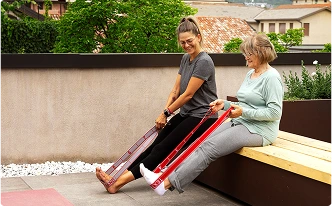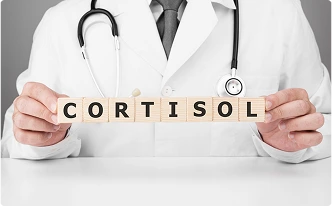We’ve all heard the saying “No pain, no gain.” It’s the go-to mantra in gyms, sports fields, and fitness challenges.
It’s meant to motivate us to push beyond our comfort zones. The phrase “No pain, no gain” has long been a fitness mantra, encouraging perseverance even when things get tough.
But when it comes to joint injuries, that familiar ache in your knee after a run, the sharp sting in your shoulder after lifting weights, or the dull pain in your ankle after a game, does this age-old advice still hold true?
Let’s be honest, not all pain is the same. And when it comes to your joints, ignoring pain can do more harm than good.
In fact, the “no pain, no gain” mindset might be the very reason some injuries never truly heal.
Understanding Pain: The Body’s Warning System
Pain is your body’s way of saying, “Hey, something’s not right.” It’s not always a sign of progress sometimes; it’s a signal of damage or stress.
When you exercise or engage in physical activity, mild soreness often called delayed onset muscle soreness (DOMS) is completely normal.
This type of pain typically appears a day or two after intense activity and fades as the muscles recover and grow stronger.
However, joint pain is a different story. Unlike muscle soreness, which feels like a dull, satisfying ache, joint pain is sharper, more localized, and often worsens with continued movement.
If you feel pain in your knee rather than around it, or in your shoulder joint instead of the surrounding muscles, it’s time to pause and pay attention.
The Real Meaning Behind “No Pain, No Gain”
Originally, “No pain, no gain” was never meant to encourage pushing through injury.

It refers to the discomfort that comes from effort and challenge like muscle fatigue after a workout or the burn you feel when pushing your limits safely.
However, over time, the phrase has been twisted. Many people now believe that pain is proof of progress, that more pain equals more results.
The truth is, this mentality can backfire, especially when pain shows up in your joints.
Pain is not always a sign of strength. Sometimes, it’s your body’s warning alarm that something is wrong.
Understanding the Difference: Good Pain vs. Bad Pain
Let’s get one thing straight: not all pain is the same.
When you exercise, you may experience mild soreness a day or two later. That’s known as Delayed Onset Muscle Soreness (DOMS), a completely normal response to physical activity.
It means your muscles are adapting and growing stronger.
But joint pain? That’s an entirely different story.
It often feels sharp, deep, or localized, especially in areas like your knees, shoulders, or elbows. Unlike muscle soreness, joint pain doesn’t feel like fatigue; it feels like something’s wrong. And continuing to train or move through that pain can lead to serious injuries.
Why You Shouldn’t Ignore Joint Pain
Many people, especially fitness enthusiasts, tend to brush off joint pain as something that will “go away on its own.” Unfortunately, that’s not always the case.
Here’s what can happen if you keep pushing through:
1. Inflammation and swelling – Overuse or strain can irritate the tissues around the joint, leading to inflammation that can last weeks or months.
2. Tendon and ligament damage – What begins as mild discomfort can progress into partial tears, sprains, or chronic tendonitis.
3. Cartilage wear and tear – Continuous stress without recovery can wear down the protective cartilage, paving the way for arthritis.
4. Loss of movement and strength – Joints that don’t heal properly may stiffen over time, limiting your ability to move freely.
A short break to heal is always better than a long recovery caused by permanent damage. Your body needs rest as much as it needs movement. Finding the right balance is key.
Common Joint Injuries You Shouldn’t Ignore
Joint injuries can affect anyone, from beginners in fitness to experienced athletes. Some of the most frequent ones include:
knee Injuries
Often caused by repetitive movement or poor alignment during workouts. Pain behind or around the kneecap is a red flag.
Shoulder Injuries
Common among weightlifters or swimmers. Pain when lifting your arm or rotating your shoulder is a sign of strain.
ElbowInjuries
Overuse of the forearm muscles can lead to inflammation of tendons around the elbow joint.
AnkleSprains
Often underestimated, but repeated ankle sprains can lead to chronic instability and long-term pain.
The earlier you address pain, the faster you heal and the less likely to face long-term consequences.
Listening to Your Body: The Smarter Way to Train
Joint health is essential for mobility and longevity, whether you’re an athlete or someone who simply enjoys staying active.
Here’s how to stay safe while keeping your fitness journey on track:
1. Warm Up Before You Work Out
A proper warm-up increases blood flow and flexibility, reducing the risk of injury. Spend at least 10 minutes stretching, doing light cardio, or mobilizing your joints before you begin.
2. Focus on Form
Poor posture and technique are major culprits behind joint injuries. Always prioritize proper form over heavy weights. If you’re unsure, seek guidance from a certified trainer or physiotherapist.
3. Strengthen Supporting Muscles
Stronger muscles around your joints provide better support and reduce stress on ligaments and tendons. Incorporate resistance training and core exercises into your routine.
4. Rest and Recover
Muscles and joints repair themselves during rest — not while you’re pushing through pain. Take recovery days seriously, and listen to signs of fatigue or discomfort.
5. Don’t Ignore Persistent Pain
If pain lingers beyond a few days, gets worse, or affects daily movement, consult a doctor or orthopedic specialist. Early diagnosis prevents long-term complications.
When to Seek Medical Help
If you’ve been feeling consistent pain, stiffness, or swelling in your joints, it’s time to consult a specialist.
Here’s when you should visit a doctor:
- Pain lasts more than a week
- You notice swelling or redness around a joint
- Pain worsens at night or during rest
- You hear clicking or grinding noises when moving
An orthopedic or physiotherapy consultation can help diagnose the root cause.
Treatment may include rest, physical therapy, medications, or targeted exercises to restore joint strength and mobility.
Early intervention always leads to faster healing.
The Real Meaning of Strength
Strength isn’t about enduring pain; it's about knowing when to stop. True fitness is built on awareness, patience, and consistency.
But in reality, knowing when to stop is one of the smartest things you can do for your body.
Strength is not about enduring every ache; it’s about understanding your limits and training with respect for your body’s signals.
The most successful athletes aren’t the ones who ignore pain; they're the ones who listen to it and adapt.
Pain might be part of progress, but only the right kind of pain. The rest is just a warning you shouldn’t ignore.
Because when it comes to joint injuries, the real “gain” is in healing, not hurting.
Latest News & Blogs

Keeping Our Seniors Safe: Easy Home Safety Tips to Prevent Falls
Fall Prevention in Older Adults: Home Safety Tips

Understanding Cortisol and How Stress Affects Your Whole Body
The Role of Cortisol: How Stress Impacts Your Entire Body

Brain Fog Causes: Stress, Diet, and Illness Explained
Brain Fog: Causes from Stress, Diet, and Illness



